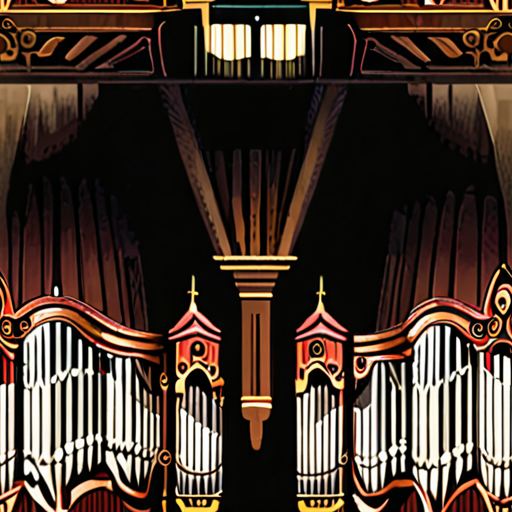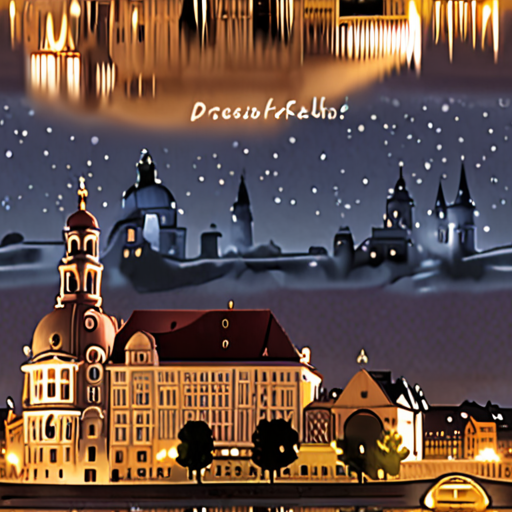Delving into the realm of historical musings, we embark on a captivating journey through the ages, where timeless museums and legendary musicians converge to reveal the intricacies of our collective past. As we navigate the labyrinthine corridors of history, we find ourselves entwined in a rich tapestry of stories, each one woven from the threads of triumph, tragedy, and transformation.

Understanding Historical Concepts
In history, there are several key concepts that help us understand and analyze the past.
-
Sources
Sources refer to the primary materials used to study history, such as documents, images, and oral testimonies.
-
Evidence
Evidence refers to the facts and data collected from sources to support historical arguments and interpretations.
-
Continuity and Change
Continuity and change refer to the ways in which historical events and processes have evolved over time, often with both similarities and differences.
-
Cause and Effect
Cause and effect refer to the relationships between historical events and the consequences that followed.
-
Significance
Significance refers to the importance and impact of historical events and processes on society and culture.
-
Perspectives
Perspectives refer to the different viewpoints and interpretations of historical events and processes, often influenced by factors such as culture, class, and gender.
-
Empathy
Empathy refers to the ability to understand and share the feelings and experiences of people in the past.
-
Contestability
Contestability refers to the idea that historical interpretations and accounts can be challenged and debated, reflecting the complexity and nuance of historical inquiry.
What Are Historical Articles Called?
Historical articles are referred to as primary sources, which are documents produced during the time of the events being studied.
- Primary sources provide direct or firsthand evidence about an event, object, person, or work of art.
- They can reflect what their creator observed or believed about the event.
Types of Primary Sources:
- Diaries and journals
- Letters and correspondence
- Newspaper articles and editorials
- Government documents and records
- Photographs and videos
Importance of Primary Sources:
Primary sources are essential for historians and researchers because they offer a unique perspective on historical events.
- They provide firsthand accounts of events, allowing researchers to gain a deeper understanding of the past.
- Primary sources can be used to challenge or confirm existing historical narratives.
- They can also be used to identify patterns and trends in historical events.
Examples of Primary Sources:
- The Declaration of Independence
- The Constitution of the United States
- The Diary of Anne Frank
- The Letters of Abraham Lincoln
Where to Find Primary Sources:
Primary sources can be found in various archives, libraries, and online databases.
- The National Archives and Records Administration (NARA)
- The Library of Congress
- The Internet Archive
- Online databases such as JSTOR and EBSCO

Three Examples of Historical Context
I’m passionate about exploring the past and understanding how historical events have shaped our present.
- The American Revolution was a pivotal moment in U.S. history, marking the country’s transition from British rule to independence. This event had far-reaching consequences, influencing the development of democracy and shaping the nation’s identity.
- The Industrial Revolution transformed the global economy, introducing new manufacturing technologies and mass production techniques. This era saw significant social and economic changes, leading to urbanization and the growth of industrial cities.
- The World Wars had a profound impact on international relations, politics, and society. These conflicts led to the rise of superpowers, the formation of the United Nations, and a shift in global power dynamics.
These examples demonstrate how historical context can provide valuable insights into the complexities of human experience and the evolution of societies.
Understanding Historical Context
Historical context is essential for grasping the nuances of past events and their ongoing influence on contemporary issues.
- Contextualizing historical events helps us understand the motivations and actions of individuals and groups involved.
- Recognizing patterns and connections between events allows us to identify broader themes and trends.
- Appreciating the complexity of historical contexts enables us to develop a more nuanced understanding of the present and its potential futures.
Exploring Historical Context Further
For those interested in delving deeper into historical context, I recommend exploring various resources, including:
- Academic journals and books on history and sociology
- Museums and historical institutions
- Documentaries and films on historical topics
By examining these resources, we can gain a richer understanding of historical context and its continued relevance in shaping our world today.

Coolest Historical Events in the World
The world has witnessed numerous pivotal events that have shaped its course, leaving behind a legacy that continues to fascinate us.
- The Apollo 11 Moon Landing in 1969 marked a historic milestone in space exploration, as Neil Armstrong became the first human to set foot on the lunar surface.
- The formation of the United Nations in 1945 brought together nations from around the globe to promote peace, security, and cooperation.
- The Women’s Suffrage Movement, spanning from 1847 to 1920, fought tirelessly for women’s right to vote and participate in society.
- The American Revolution from 1775 to 1783 saw the birth of a new nation, founded on principles of liberty, democracy, and freedom.
- The fall of the Berlin Wall in 1989 symbolized the end of the Cold War era and paved the way for reunification and global unity.
- The construction of the Great Pyramid of Giza around 2580 BC remains an architectural marvel, showcasing ancient Egyptian ingenuity and skill.
- The discovery of King Tut’s tomb in 1922 unveiled a treasure trove of artifacts, revealing secrets of ancient Egyptian royalty and culture.
- The Battle of Gettysburg in 1863 was a turning point in the American Civil War, marking a decisive Union victory and cementing the country’s commitment to freedom and equality.
- The Renaissance in 14th-century Italy sparked a cultural and artistic revolution, giving rise to masterpieces by Leonardo da Vinci, Michelangelo, and Raphael.
- The Industrial Revolution in the late 18th century transformed the world, introducing mechanization, mass production, and unprecedented economic growth.
- The Wright brothers’ successful flight in 1903 marked the beginning of aviation, opening up new possibilities for transportation and exploration.
- The Rosetta Stone, discovered in 1799, deciphered ancient hieroglyphics, unlocking the secrets of Egypt’s past and shedding light on its mysterious culture.
- The Black Death pandemic in the 14th century had a profound impact on European society, leading to significant changes in demographics, economy, and culture.
- The Magna Carta, signed in 1215, established fundamental rights and liberties, influencing constitutional law and governance worldwide.
- The Viking Age, spanning from the late 8th to the early 11th centuries, saw Norse explorers and warriors establish trade routes, settlements, and kingdoms across Europe and beyond.
- The Inca Empire, flourishing from the 13th to the 16th century, built impressive road networks, terracing systems, and monumental architecture, showcasing Andean engineering prowess.
- The Mongol Conquests, led by Genghis Khan and his successors, created the largest contiguous empire in history, stretching from China to Eastern Europe.
- The Mayan Civilization, thriving from 2000 BCE to 1500 CE, developed sophisticated astronomy, mathematics, and architecture, leaving behind a rich cultural heritage.
- The Roman Empire, spanning from 27 BCE to 476 CE, left an indelible mark on Western civilization, shaping politics, law, architecture, and language.
- The Chinese Qin Dynasty, ruling from 221 to 206 BCE, standardized weights, measures, currency, and writing, laying the foundation for modern China.
- The Aztec Empire, flourishing from the 14th to the 16th century, built grand cities, temples, and palaces, showcasing Mesoamerican artistry and engineering skills.
- The Crusades, launched in the 11th century, involved a series of military campaigns aimed at reclaiming the Holy Land, shaping Christian-Muslim relations and European politics.
- The Ottoman Empire, rising from the 13th to the 20th century, played a significant role in global politics, trade, and culture, leaving behind a lasting legacy in architecture, cuisine, and music.
- The British Empire, expanding from the 16th to the 20th century, established colonies, trading posts, and dominions across the globe, shaping modern international relations and global governance.
- The Soviet Union, formed in 1922 and dissolved in 1991, played a crucial role in shaping the Cold War era, influencing global politics, economics, and culture.
- The French Revolution, unfolding from 1789 to 1799, marked a pivotal moment in modern history, establishing the principles of liberty, equality, and fraternity.
- The Meiji Restoration in Japan, occurring in 1868, brought about a period of rapid modernization, industrialization, and cultural transformation, propelling Japan onto the world stage.
- The Indian Independence Movement, spanning from the late 19th to the mid-20th century, fought for India’s freedom from British rule, shaping the country’s future and inspiring movements worldwide.
- The Cuban Revolution, led by Fidel Castro and Che Guevara, overthrew the Batista regime in 1959, establishing a socialist state and becoming a beacon for revolutionary movements globally.
- The Iranian Revolution, unfolding in 1979, resulted in the overthrow of the Shah’s monarchy, establishing an Islamic republic and having far-reaching implications for Middle Eastern politics and global relations.
- The Velvet Revolution in Czechoslovakia, occurring in 1989, peacefully ended communist rule, paving the way for democratic reforms and European integration.
- The Fall of the Berlin Wall, happening in 1989, symbolized the end of the Cold War era, marking a new chapter in German reunification and European history.
- The Arab Spring, emerging in 2010, saw widespread protests and uprisings across the Middle East and North Africa, demanding democratic reforms, human rights, and social justice.
- The Hong Kong Protests, unfolding in 2019, highlighted concerns over democracy, autonomy, and freedom, sparking a global conversation on human rights and governance.
- The COVID-19 Pandemic, spreading globally since 2020, has had a profound impact on public health, economies, and societies worldwide, accelerating digital transformations and reshaping global relations.
The Most Iconic Moment in History
I’ve spent countless hours delving into the annals of time, searching for the most pivotal moment that has left an indelible mark on humanity.
- The assassination of Archduke Franz Ferdinand in 1914, which sparked World War I and forever changed the course of global politics.
- The landing on the moon in 1969, a monumental achievement that pushed the boundaries of human ingenuity and exploration.
- The fall of the Berlin Wall in 1989, symbolizing the end of the Cold War and the beginning of a new era of freedom and cooperation.
- The discovery of King Tut’s tomb in 1922, uncovering secrets of ancient Egypt and captivating the imagination of people worldwide.
Each of these moments has had a profound impact on our collective understanding of the world and its complexities.
Why These Moments Stand Out
These events have transcended time and geography, resonating with people across cultures and generations.
- They often involve significant turning points in history, altering the trajectory of nations and empires.
- They frequently involve remarkable individuals who have made a lasting impression on the world.
- They often capture the essence of human curiosity, creativity, and resilience.
As we reflect on these iconic moments, we’re reminded of the power of human endeavor and the enduring legacy of our shared experiences.
Exploring the Past, Enriching Our Future
By examining the most iconic moments in history, we can gain valuable insights into the complexities of human nature and the evolution of our world.
This knowledge can inspire us to become better versions of ourselves, fostering empathy, understanding, and a deeper appreciation for the intricate tapestry of human experience.

Who is the Most Awesome Historical Figure?
The concept of awesomeness can be subjective, but based on various polls, surveys, and historical accounts, I’d argue that Leonardo da Vinci stands out as one of the most incredible figures in human history.
- Polymath Extraordinaire: Da Vinci was a true Renaissance man – an artist, inventor, engineer, anatomist, and scientist. His expertise spanned numerous fields, leaving behind an impressive legacy of innovative ideas and groundbreaking works.
- Innovative Genius: Da Vinci conceptualized flying machines, armored vehicles, submarines, and other futuristic contraptions centuries before they became a reality. His designs and blueprints continue to inspire engineers and inventors worldwide.
- Artistic Masterpiece: As a painter, sculptor, and architect, Da Vinci created iconic masterpieces like the Mona Lisa and The Last Supper. His artistic genius continues to captivate audiences globally.
Other notable historical figures who could be considered among the most awesome include:
- Alexander the Great, who conquered vast territories and spread Greek culture throughout his empire.
- Cleopatra, the enigmatic Egyptian queen who navigated complex politics and diplomacy to secure her kingdom’s power.
- Albert Einstein, whose groundbreaking theories revolutionized our understanding of space and time.
While opinions may vary, these individuals have undoubtedly left an indelible mark on human history, shaping the course of civilization and inspiring future generations.
Conclusion:
In conclusion, the notion of “most awesome” is inherently subjective, but Leonardo da Vinci’s remarkable achievements, innovative spirit, and enduring impact on art, science, and engineering make him a strong contender for this title. His legacy serves as a testament to human potential and the boundless possibilities that await us when we combine creativity, curiosity, and determination.
0 Comments